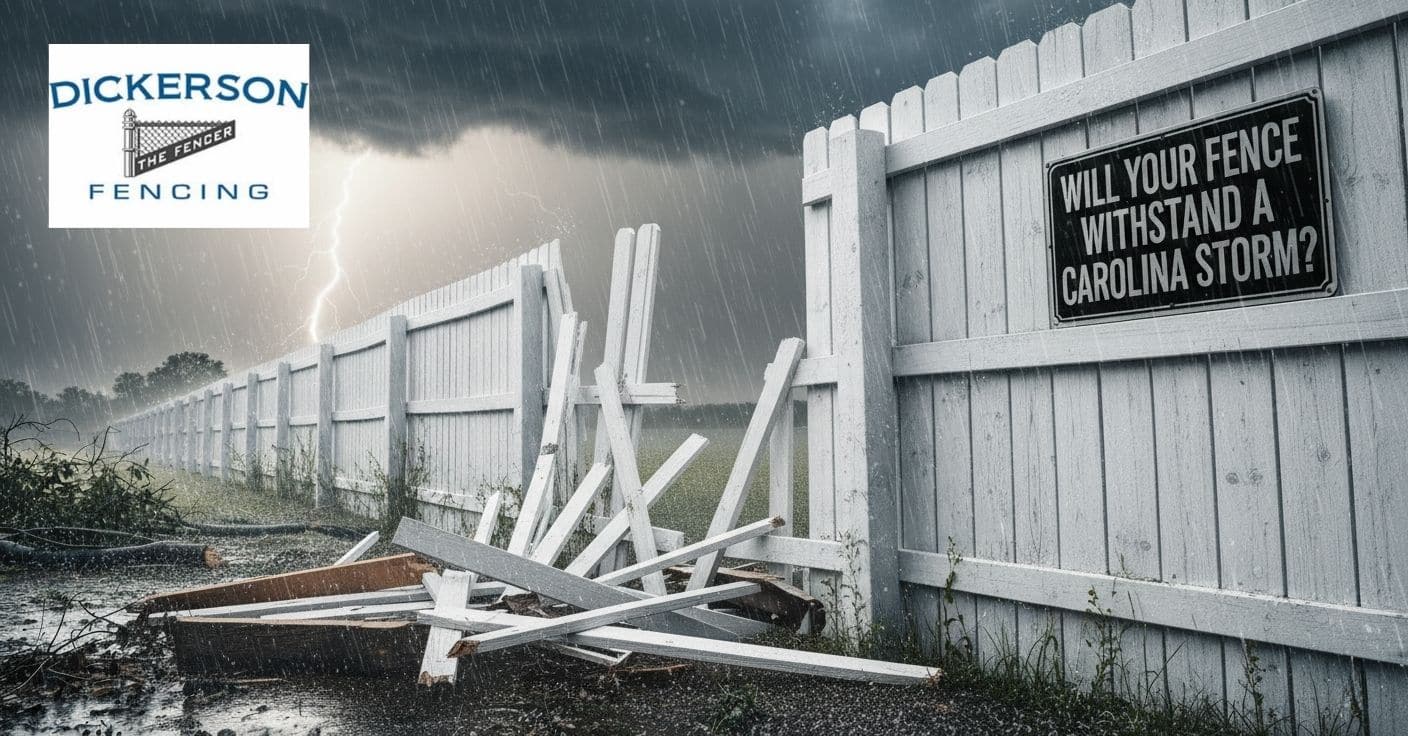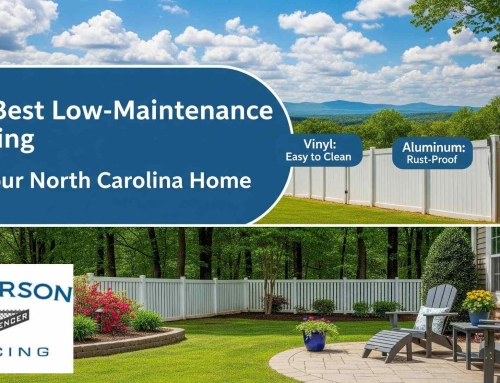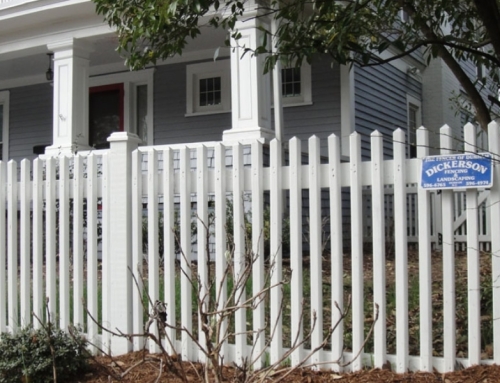Will Your Fence Withstand a Carolina Storm?
Early fall in the Triangle is one of the best times of the year. The air gets crisp, and the leaves begin to turn. But as North Carolina residents know, this season also brings the peak of storm and hurricane activity. High winds and heavy rain can turn a weak fence into a costly problem.
Your fence is your property’s first line of defense. Taking a few proactive steps now can save you from expensive emergency fence repairs later. Here’s how to prepare your fence for the storm season and what to do if damage occurs.
The Pre-Storm Fence Checklist
Before the weather turns, walk your fenceline and perform this simple inspection.
Inspect Your Posts
The posts are the foundation of your fence. Grab each post and give it a firm shake. If you feel significant wobble or give, it’s a red flag. For wood posts, check the base for signs of rot or insect damage, as a healthy fence is key to long-term security. For metal posts, look for rust or corrosion near the ground.
Check Your Panels & Gates
Look for any loose boards, pickets, or panels. High winds will find and exploit these weak spots. Also, test your gate hinges and latches. Ensure your gate can be closed securely so it doesn’t swing wildly and damage itself or the posts it’s attached to.
Clear the Fenceline
A storm’s biggest threat often comes from flying debris.
Trim any weak or overhanging tree branches that could fall on your fence.
Secure loose items in your yard like patio furniture, grills, and playsets.
Remove any debris or climbing vines from the fence itself.
Document the Condition
Use your phone to take quick photos of your fence from several angles. Having “before” pictures is incredibly helpful if you need to file an insurance claim for post-storm fence damage.
What to Do After the Storm Passes
Once the storm has cleared and it’s safe to go outside, it’s time to assess the situation.
Safety First
Before you do anything, check your yard for downed power lines. If you see any, stay far away and contact your utility company immediately. Do not approach or touch any part of your fence if it is in contact with a power line.
Assess the Damage
Look for the most common types of fence storm damage:
Leaning sections
Broken or missing boards and pickets
Completely downed sections of fencing
Bent or damaged metal posts
Take “after” photos from the same angles you took your “before” photos to document the full extent of the damage.
DIY Fix vs. Professional Fence Repair
Some minor damage can be a simple DIY fix. If a single board has come loose, you may be able to re-secure it yourself.
However, for structural issues like leaning posts or entire downed sections, it’s crucial to call for professional help. An improper repair can fail during the next storm. If you need reliable and fast fence repair in Raleigh, Durham, Cary, or the surrounding Triangle communities, a professional assessment is your best bet.
Building a Stronger Defense: Choosing a Storm-Resistant Fence
When it’s time to replace a damaged fence, consider all your options. Our complete guide to fencing types can help you decide.. Vinyl and aluminum fencing are excellent, durable choices that resist moisture and high winds. Chain link fences also allow wind to pass through, reducing the force against them.
Don’t Wait for the Next Storm Warning
Being proactive is the key to protecting your property. A strong, well-maintained fence is an investment in your home’s safety and security.
If you’re concerned about your fence’s condition or need fast, professional storm damage repair, contact the experts. Contact Dickerson Fencing today for a free estimate or give us a call at 919-596-6765 and ensure your property is secure all season long.
.svg) NEW! We offer financing. Prequalify today and contact us to learn more about financing your next project!
NEW! We offer financing. Prequalify today and contact us to learn more about financing your next project!







